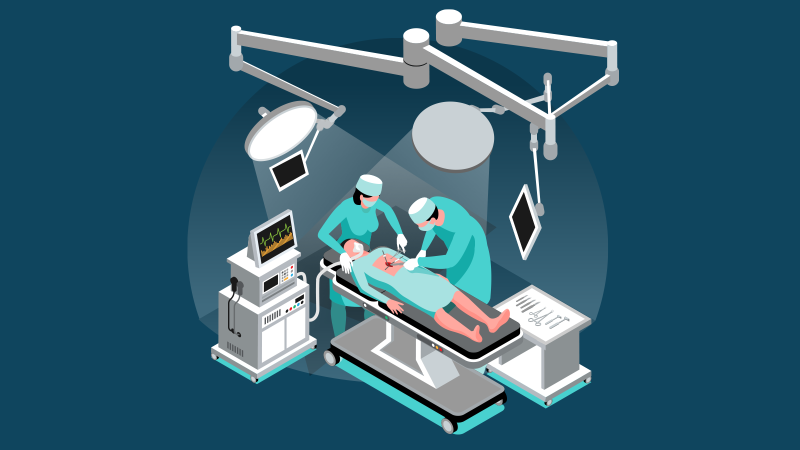
Increased work hours, sedentary lifestyle and stress can cause work-life imbalance, often leading to abdominal and pelvic health problems. Health conditions may deteriorate to the extent of needing abdominal surgery. Thankfully, progress in medical instruments allows surgeons to operate without any major cuts on the body. Surgeons can perform laparoscopic or keyhole surgery, in which they make one or more small keyhole-sized cuts in the abdomen. They insert small tubes to carry the operating instrument, a camera which projects the inside of the abdomen on the screen and a light for clear vision. The more manoeuvrable the laparoscopic instrument, the easier it will be to operate, and lesser time it will take.
A team of researchers from the Indian Institute of Technology Bombay (IIT Bombay) has designed, analysed and experimentally evaluated a new cost-effective handheld laparoscopy instrument that offers better manoeuvrability as compared to other laparoscopic instruments commonly used by surgeons in India. The laparoscopic instruments commonly used in India support the movement of the instrument in only four ways. A few robotic instruments are able to provide more ways of movement. They are expensive, and their maintenance is costly, limiting their widespread use. The instrument developed by IIT Bombay supports the movement of the parts in seven ways and a complete rotation of the tip, making it easy to reach the otherwise inaccessible organs in the abdomen. The study was published in the Annals of Biomedical Engineering (2022).
The Rajiv Gandhi Science and Technology Commission, Government of Maharashtra, Mumbai and the Department of Science and Technology, New Delhi, supported the development of this instrument.
The instrument developed by the IIT Bombay team works like the human hand. It has a palm and finger-like arrangement for grabbing. A wrist connects the grabbing part to the handle, which the surgeon uses to control the instrument. The handle of this instrument is comfortable to hold and control the operating tool.
The movements of the conventional instrument use wire and pulley arrangement for its operation, which deteriorates after multiple sterilisations, as it is not made of rustless material. Unlike rigid links, the wire and pulley arrangement loses its stiffness, strength and shape due to heating and cooling several times during sterilisations. It can lose its accuracy and hence increase the time of the surgery. The assembly then needs to be replaced frequently, leading to increased cost of the surgery. To facilitate movement, the IIT Bombay instrument uses rigid links made with biocompatible stainless steel that is robust and free from rust. It maintains its strength despite frequent heating and cooling cycles.
The researchers gathered inputs from 93 surgeons across India. The surgeons expressed a need for an instrument which is easy to hold and control and has a surgical tool which has moving joints. Researchers designed an instrument based on these needs and experimentally validated the prototype at the Centre of Excellence for Minimal Access Surgery Training, Mumbai. They collected feedback from laparoscopic surgeons of different specialities. The researchers made various improvements in the tool types, dimensional limits and handle design based on the detailed feedback from the surgeons and manufactured the final instrument. The researchers also validated the reach and movements of this instrument using software modelling.
The team tested the instrument for multiple sterilisation cycles and compared it with another commonly used instrument. They found that their new instrument sustains sterilisations well. There is no loss of its function in terms of grasping force and movements of the tool as against the other instrument, whose movements were affected. The team found that the new instrument can handle typical weights and forces during surgical procedures and is able to manoeuvre through the small incision on the abdomen of the patient. Since it is reusable, the IIT Bombay instrument is cost-effective compared to the current commercially available instruments. Surgeons found that the new instrument is able to meet their needs to reach intricate locations in the patient’s abdomen and is easier to use for applying stitches compared to conventional instruments. The final design is patented and licensed to Eclipse Instrumentation Pvt. Ltd., Thane, Mumbai.
The researchers plan to evaluate the instrument in real procedures with different needles and stitches that surgeons use. Wider use of such a device will reduce the time and cost of surgeries and can benefit patients and surgeons both. This newly developed laparoscopic device is an example of how experts in engineering and medicine, working together innovatively, can benefit the lives of millions.





